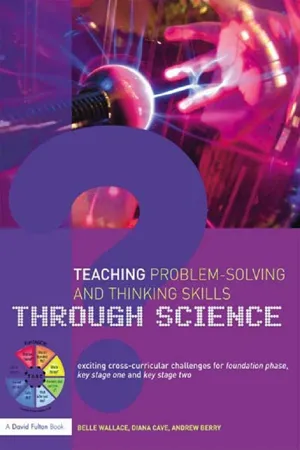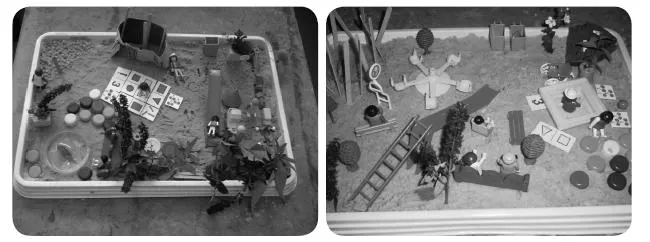
Teaching Problem-Solving and Thinking Skills through Science
Exciting Cross-Curricular Challenges for Foundation Phase, Key Stage One and Key Stage Two
- 158 pages
- English
- ePUB (mobile friendly)
- Available on iOS & Android
Teaching Problem-Solving and Thinking Skills through Science
Exciting Cross-Curricular Challenges for Foundation Phase, Key Stage One and Key Stage Two
About This Book
This highly practical resource book presents ways in which teachers can help to develop children's problem-solving and thinking skills through a range of exciting science topics. The book contains classroom-based activities which have been trialled and evaluated by teachers and children, and helpfully shows how the skills developed through rigorous scientific investigations can be used across all areas of the curriculum.
The scientific curriculum requirements are extended with exciting and inspiring problem-solving activities that use scientific skills, for example:
-
- fair-testing
-
- pattern-seeking
-
- surveying
-
- classifying and identifying
-
- investigations over time
-
- designing
-
- testing and adapting an artefact
-
- open-ended exploration
The book contains learning objectives for each activity, step by step guidelines for carrying out each problem-solving activity, basic equipment that's needed, examples of learner's work and guidelines for assessment. This book is a must-buy for all early years and primary school teachers keen to encourage an inclusive but differentiated approach to the development of problem-solving and thinking skills in their pupils.
Frequently asked questions
Information
Chapter 1
An explanation of TASC. How does
TASC help to develop the
processes of scientific thinking in
learners?
Making Science a real, hands-on problem-solving learning experience

Investigate with the learners
Personalised learning

In-depth investigations
Differentiated learning
Table of contents
- Cover
- Half Title
- Full Title
- Copyright
- Contents
- Acknowledgements
- Introduction: Why use TASC as a Framework for developing problem-solving and thinking skills?
- Chapter 1: An explanation of TASC. How does TASC help to develop the processes of scientific thinking in all learners?
- Chapter 2: Detailed planning guidelines for a cross-curricular TASC week based on Space and Rockets
- Chapter 3: The children's voices: research materials, book reviews and recording techniques for the TASC project on space and rockets
- Chapter 4: Examples of planning TASC science projects: Early Years and Key Stage 1
- Chapter 5: Examples of planning TASC science projects: Key Stage 2
- Chapter 6: Further ideas for developing TASC projects
- Appendix 1
- Appendix 2
- Appendix 3
- Appendix 4